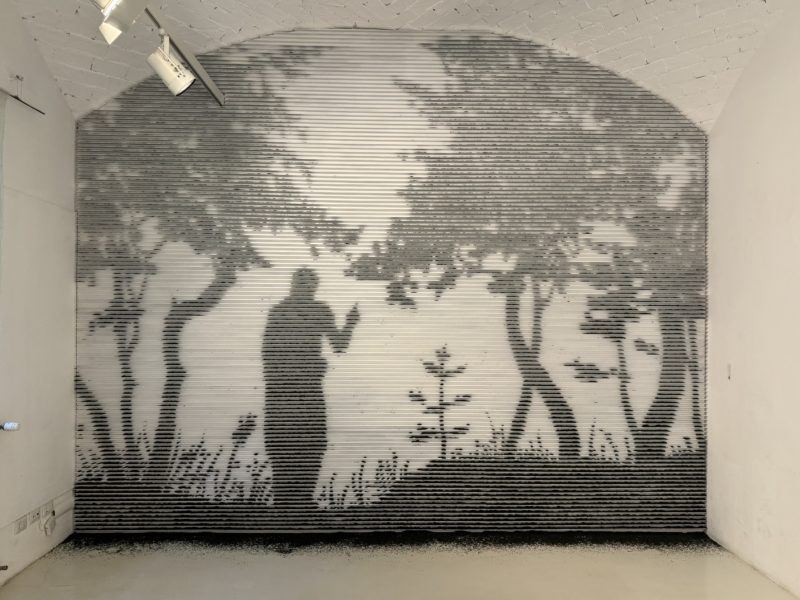
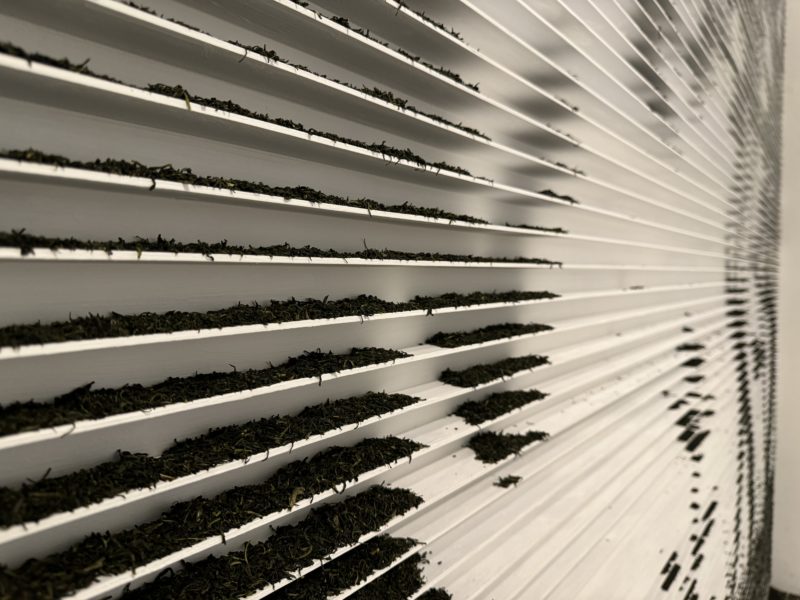
2024 밀라노 한국공예전에 찻잎 설치작품을 출품하게 되었다. 이 전시는 한-이 수교 140주년을 기념하여 세계 최대 교모 디자인 축제인 밀라노 디자인위크 기간동안 열리게 되었다. 전시는 ‘사유의 두께’라는 주제 아래 세 개의 파트로 구성되는데 한국의 정서를 대표하는 소박함의 미감을 차茶의 시간으로 담아내는 두 번째 파트에 찻잎설치가 들어갔다.
전시공간에 대한 이미지를 받고 나는 한국의 소나무 숲길 이미지를 밀라노에 옮겨야 겠다는 생각을 했다. 숲길 한 가운데에는 숲길을 거니는 인물의 실루엣을 넣고 싶었는데 마침 밀라노에 대한 이미지 검색을 하다가 두오모 성당 꼭대기에 설치된 조각상들이 눈에 들어왔다. 그 중 맘에 드는 포즈를 하고 있는 하나의 조각상 실루엣을 소나무 숲길에 넣었더니 느낌이 괜찮았다. 마치 철학자 같기도 하고 현자 같이 보이기도 하는 이 조각상은 수백년을 두오모 위에 서 있던 단단하고 영속적인 조각인데 이 작업에서는 바람만 불어도 흩어지고 일주일의 전시기간 이후에는 사라질 연약한 찻잎 그림자로 표현되게 되었다.
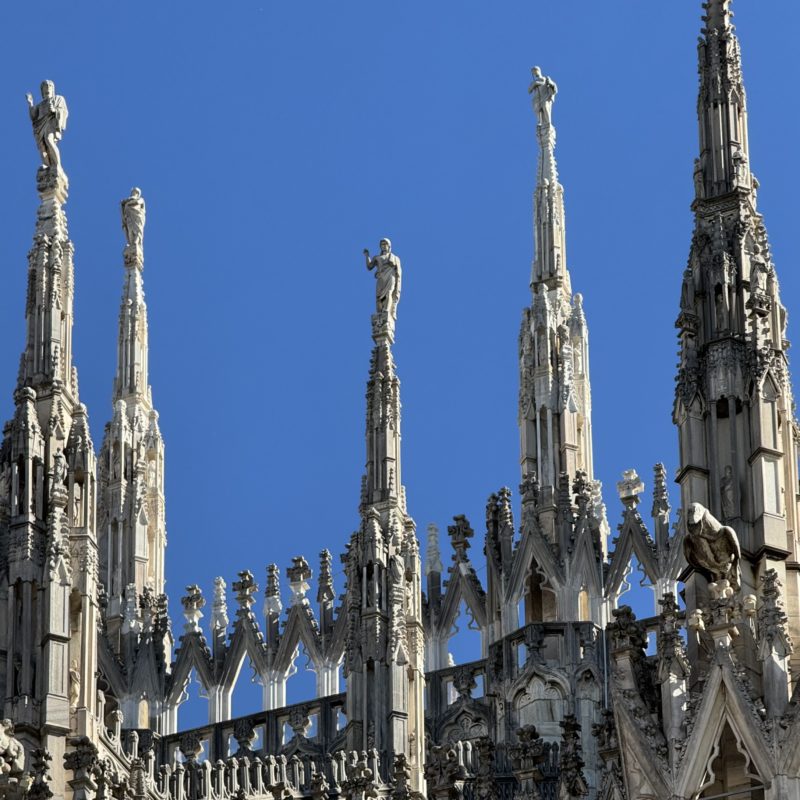
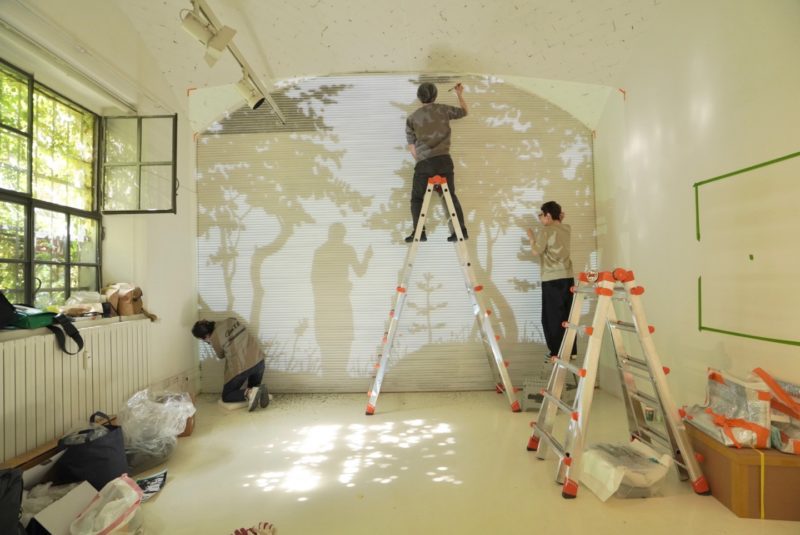
행사의 특성상 단기간에 설치를 마쳐야 했는데 함께 있던 친구들과 스탭들의 도움으로 오픈 전 날 가까스로 설치를 완성할 수 있었다.
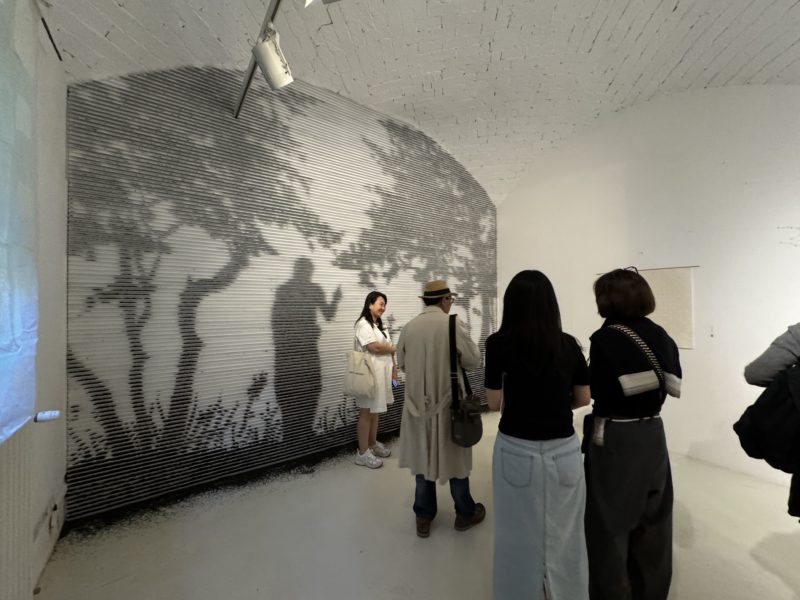
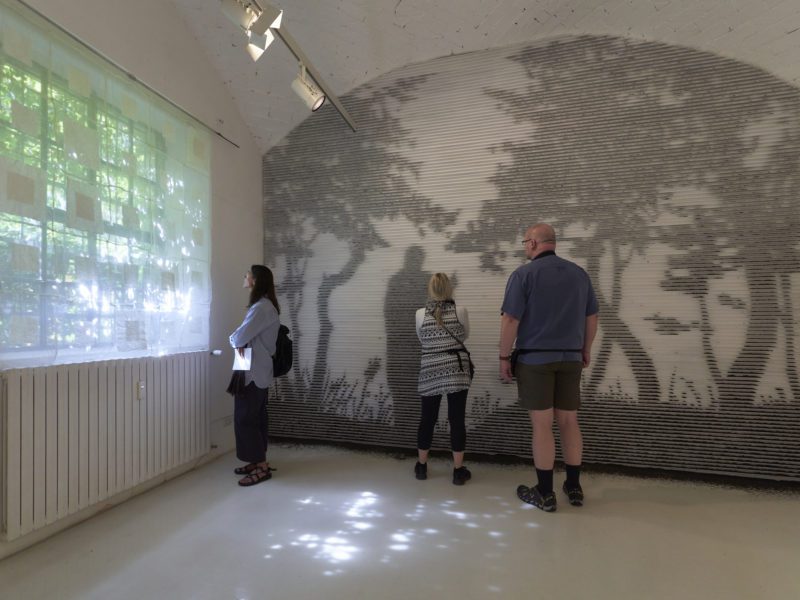
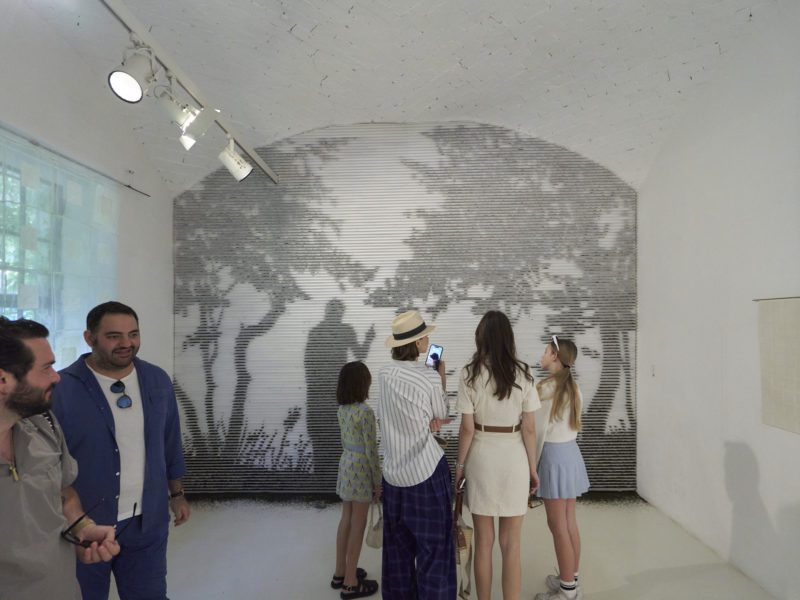
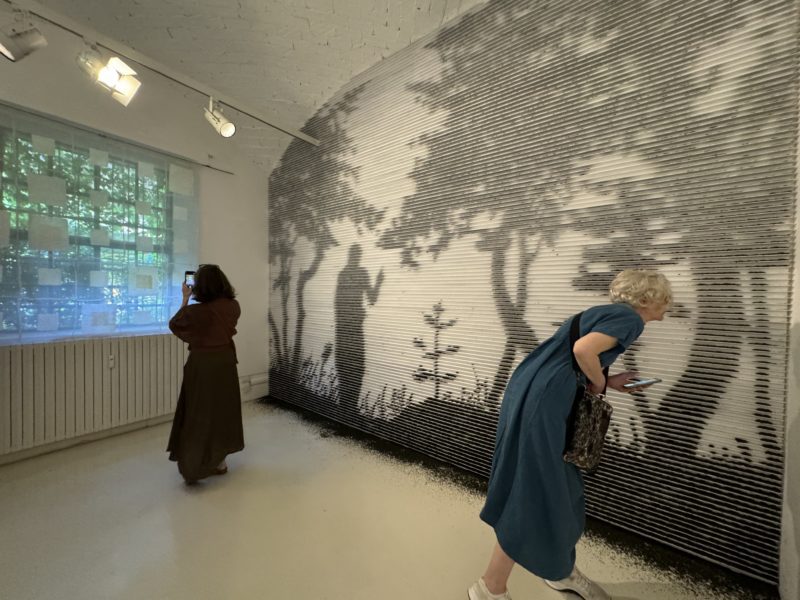
국산 녹차로 이루어진 이 설치작품은 많은 관람객들이 좋아해 주셨는데 특히나 공간 가득 퍼진 녹차향이 좋다는 반응이 많았다.
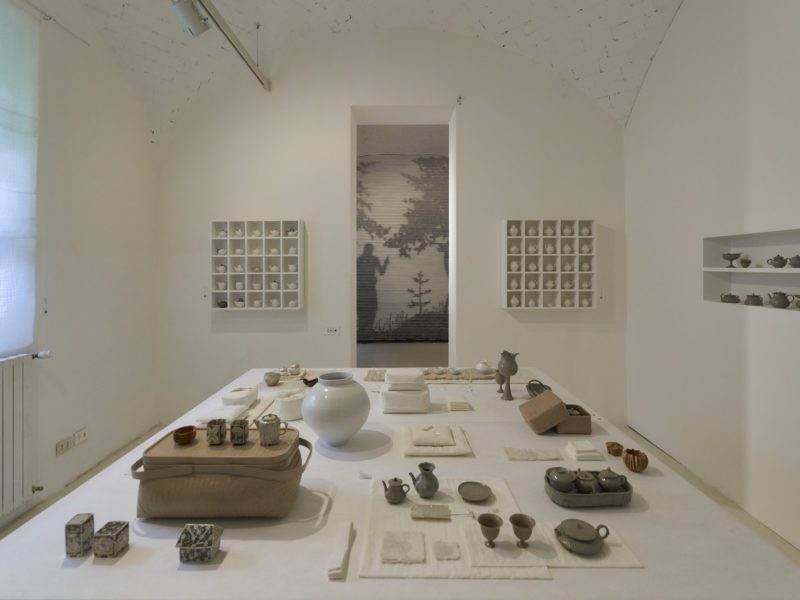
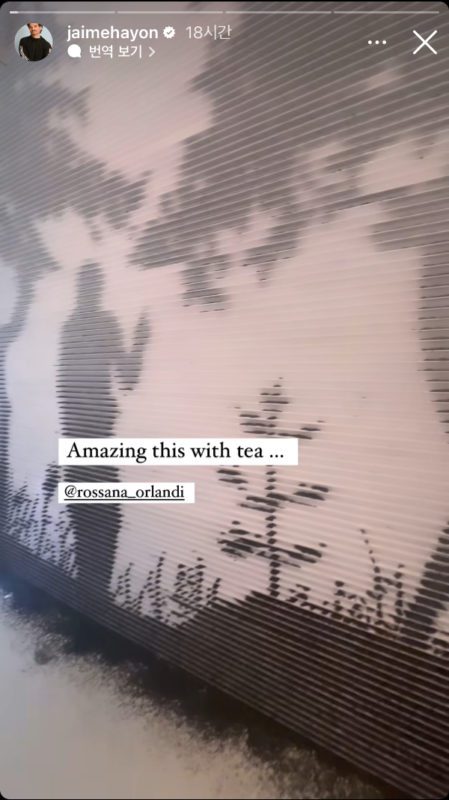
SNS의 시대라 많은 분들이 이 작품을 공유해 주셨는데 그 중에 유명 디자이너인 하이메 아이욘(Jaime Hayon)이 내 작업을 스토리에 포스팅하는 일도 있었다.
전시 이후에 인터뷰 요청이 오기도 했는데 다음은 인터뷰 전문이다.
Question to the artist, Changwon Lee:
Q: Your artwork beautifully incorporates natural materials traditionally used in Korea, showcasing your talent for seamlessly blending nature and art. What inspired the idea of incorporating tea leaves or coffee grounds into wood panels? Could you share some insights into the process behind creating this type of artwork?
A: In 1998, when I moved to Germany to study art, I encountered a cultural shift in the foods available in grocery stores compared to what I was accustomed to in Korea. This sparked my contemplation on the adage 'You are what you eat,' leading me to imagine the physical embodiment of the diverse array of foods consumed by Germans, much like myself. This curiosity ignited my interest in food as a subject for artistic exploration.
Drawing from my background in sculpture, I embarked on experiments using various food materials such as bread, fruits, sausages, coffee grounds, and corn powder. Venturing beyond traditional sculptural mediums was both challenging and liberating for me.
One serendipitous day, while browsing through an Asian grocery store, I stumbled upon a pack of black tea. Inspired, I fashioned a makeshift sack using vinyl, intending to encapsulate the tea leaves within, in a silhouette resembling my own form. However, I found the enclosed result unsatisfactory. Determined to create a more interactive and sensory experience, I devised a unique construction reminiscent of venetian blinds. This structure allowed me to arrange the tea leaves in a visually striking manner while inviting viewers to engage with the artwork through touch and scent.
Thus, my journey of incorporating natural materials, such as tea leaves and coffee grounds, into wood panels was born out of a fusion of cultural experiences and artistic experimentation.
Q: Tea appears to be a recurring medium for expressing your emotions. Could you elaborate on what tea signifies for you and the significance of the tea ceremony in your life?
A: When I began using tea leaves, I was immediately drawn to their texture, reminiscent of fallen dried leaves. I found the various shapes to be excellent visual elements for constructing images. Being of Asian origin, tea resonated with me as a medium through which I could explore and express aspects of Asian culture and philosophy.
Simultaneously, I observed that Europeans had a strong affinity for tea compared to Koreans. This insight led me to believe that artwork created with tea could be universally appreciated by global art audiences.
I learned that tea leaves carry within them the essence of time and energy expended in their creation. When steeped in hot water, this essence is transferred to our bodies. This concept parallels the creation and perception of artworks by artists and observers alike.
Q: In your piece, we observe the silhouette of a man amidst a forest, a motif often present in your work. What do these shadows symbolize for you, particularly in the context of nature?
A: At the inception of conceptualizing the installation, my aim was to transport the Korean landscape to Milan. I envisioned a serene, curving pine forest with a solitary figure traversing its depths. Concurrently, I delved into images of Milan and serendipitously stumbled upon the statues atop the Duomo. Inspired, I extracted the silhouette of one such statue and positioned it amidst the forest setting. The juxtaposition was striking; the figure assumed a philosophical aura, seamlessly integrating into the scene.
I believed this addition would offer Milanese viewers a unique perspective and enhance their enjoyment of the piece. Unlike the statues, which had stood for centuries, embodying permanence and rigidity, the figure in my tea installation existed as a delicate, ephemeral shadow destined to vanish within a week. I contemplated the impact this ephemeral quality would have on observers once they grasped its transient nature.
Q: The second part of the exhibition, SOBAK, explores the themes of simplicity and the passage of time during the tea ceremony, inviting viewers to reflect and share moments. In the rapidly evolving landscape of modern Korean society, do you believe people are seeking moments of serene mindfulness and connection through art, tea, and contemplation? Is this a means for individuals to reconnect with their country's identity, traditions, and culture from a contemporary perspective?
A: In conclusion, I think that if the audience liked and enjoyed this second part of the exhibition, they may have found something missing in the contemporary society in which they live.
Artists seem to sense and express something in their contemporaries, but cannot accurately predict or induce any specific outcome.
Q: Your recent collective exhibition in Italy marked another remarkable milestone. How was your experience, and what was your impression of participating in Fuorisalone?
A: I was surprised by the influx of visitors. In fact, I had barely completed my installation late the night before the opening day. Upon arriving at the venue on the opening day, I was astonished to learn that there had already been a significant number of visitors. I received numerous compliments and discovered numerous Instagram posts featuring my installation. I am truly grateful for the positive reception.
